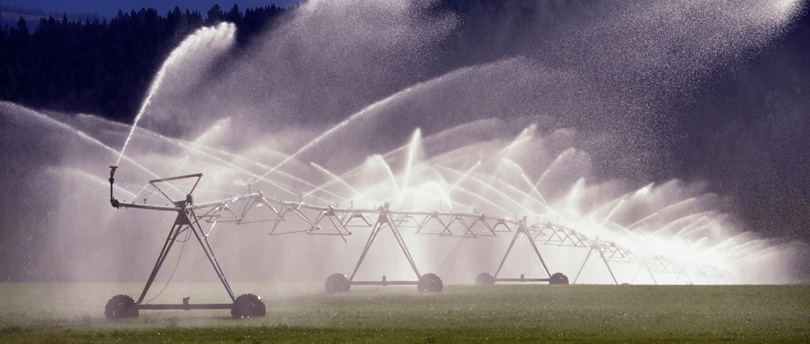Water footprint is the answer: what’s the question?
07/03/2016

If you ask someone over dinner, “did you know that 7,000 litres of the world’s water have been consumed to bring the beef steak to your plate, but only 42 litres to provide the potatoes?” the answer is usually accompanied by shock (and disbelief). This provides a useful launch-point for a discussion about the sustainability of our lifestyles, but often ends up with the question “so, should we stop eating meat”?
Unfortunately the over-simplistic messages of water volumes have been widely abused to justify or encourage changes in diet and lifestyles. To answer the question about the impacts of our diet on the world’s water we need to unpack the numbers and think about potential impacts.
Firstly, how much of the total volume of water is “green” water (that is, rain water used by plants at the point where the rain falls)? Most British and Irish beef, for example, is largely fed on grass and grains that have been grown using rainfall only. We can argue that this water has a very low opportunity cost. If we stopped raising animals on that land, something else would be growing there (whether another crop, forest or natural vegetation) that would use at least as much water as the grass did and it would not make a substantial difference to the amount of water available in the basin for domestic, industrial and environmental uses. Secondly, what is the potential impact of using “blue” water (that is, water withdrawn from rivers, lakes and aquifers) on the availability of water for other users in the basin? 1 m3 withdrawn from a place (or time of year) with plentiful water resources has a much lower potential impact than 1 m3 withdrawn from a place where freshwater resources are scarce.
The modern western diet is rich in its diversity with foods coming from all round the world and grown in different agricultural systems; these will all have different potential impacts on the water footprint. Recently, we looked at the potential impact of the UK diet on water scarcity (Hess, et al. 2015. Food Policy, 50: 1-10) using the approaches of ISO14046. In total, we estimated that 56.2 Gm3 of water is consumed each year to support the diet of the UK. That is equivalent to 2,400 litres per person per day. However, most of this is from rain-fed agriculture, and the “blue” water consumed in supporting the UK diet is only 160 litres per person per day – which by coincidence is almost the same as the average daily per capita water use in our homes.
So what uses the largest amount of water? Read the full version of this blog post can be found on the Food Climate Research Network…
Categories & Tags:
Leave a comment on this post:
You might also like…
From nature walks to neural networks: My journey in Applied AI at Cranfield
Hi, I’m Ebru K and choosing a postgraduate degree is about more than just picking a subject; it’s about choosing where your future begins. As an international student from Turkey, I ...
Leading With Heart: My Journey as Cranfield Student Association President by Summer Yan
When I first arrived at Cranfield, I had no idea that one year later I would be standing at the heart of our student community, serving as President of the Cranfield Student Association (CSA). ...
Creating and using constituent lists in Datastream
Whether you're analysing industry performance, or comparing company financials, Datastream is a powerful tool. One of its most useful features is the ability to work with constituent lists — collections of companies grouped by index, ...
Landing at Cranfield: First-term experiences and life beyond the classroom
Starting a postgraduate course can feel daunting, especially if you’re new to the aviation industry. In this blog series, Adit Shah shares his journey on the Air Transport Management MSc at Cranfield. From first-term ...
Accelerating ambition: How Amelie Rohan engineered her future at Cranfield
In the world of high-performance automotive engineering, the gap between being a “fan” and being a professional is measured in more than just miles. It is measured in technical precision, hands-on ...
Study better and smarter in 2026
Happy new year! Now is the perfect time to reflect on your studies so far, thinking about what you’re doing well and where you need to focus a bit more attention. Getting back into ‘study ...






